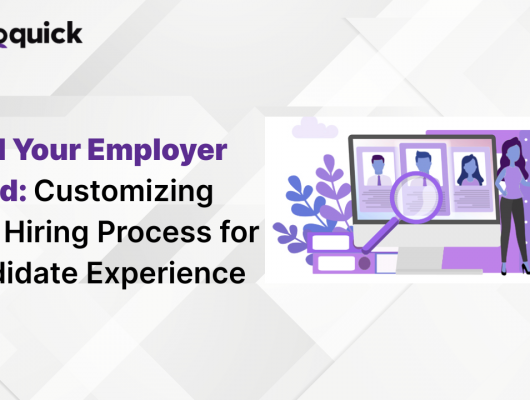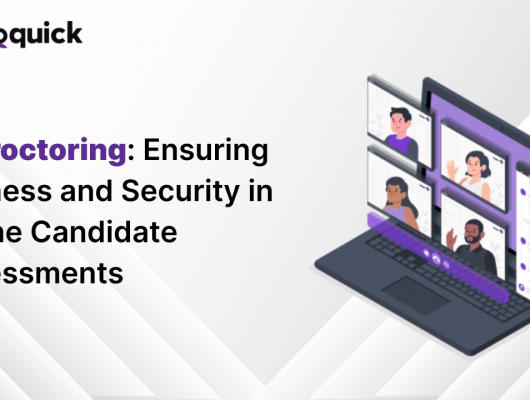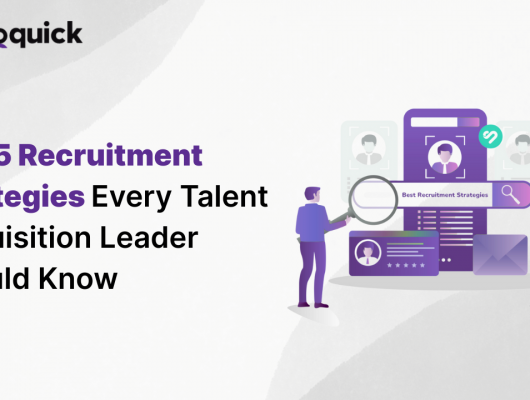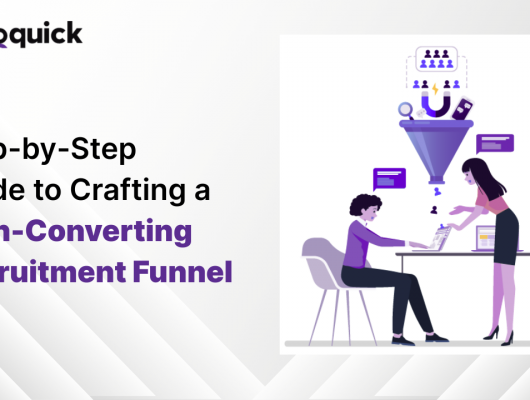Okay, so let’s talk about hiring. Specifically, that moment right after you post a job and the applications start rolling in. For a lot of hiring teams, that brings a familiar mix of hope – hoping to find that perfect person – and, let’s be honest, a little bit of dread. Dread at the sheer volume, right? Sifting through hundreds, sometimes even thousands, of resumes and cover letters manually? It’s not just time-consuming, it’s repetitive, honestly, and can totally burn recruiters out.
And this old way? It’s just… inefficient. Especially now, everything moves so fast in the job market. It really slows things down, creates significant delays. Plus, it leaves the door wide open for human errors, maybe even unconscious biases, to influence decisions. That potentially causes you to miss out on truly qualified individuals. Or build less diverse teams.
But imagine this for a sec. What if that initial screening part wasn’t this huge bottleneck? What if technology could just… handle the really heavy lifting? Presenting you with a curated list of the most promising candidates, quickly and objectively? This isn’t some far-off science fiction idea; it’s the power of Artificial Intelligence (AI actively changing candidate screening) right now.
So, this post is really going to be your guide on using AI for smarter shortlisting. We’ll dive into how AI is kind of changing everything here, making candidate screening feel more effortless, definitely more efficient, and significantly more effective. We’ll cover how it works, the actual benefits you’ll see, potential challenges to watch out for, and what to look for in leading AI candidate screening software to help your hiring strategy. You know, according to a recent article on the future of HR from the World Economic Forum, automating tasks like screening is becoming pretty essential for competitive talent acquisition: Source: World Economic Forum on the Future of Jobs. It’s definitely a trend.
The High Cost of Manual Candidate Screening: Why the Old Ways Fail
Let’s face it, the old ways of screening candidates, doing it all by hand, they really come with some big downsides that just get in the way of effective recruitment. The sheer volume of applications combined with manual processing creates a strain on resources and impacts hiring outcomes. Recognizing these limitations? That’s step one toward embracing smarter solutions, obviously.
Time is the Biggest Drain
Think about it. Recruiters can spend hours, maybe days, reviewing resumes for just one single open position. Each one needs careful reading to find relevant skills, experience, qualifications. This manual work? It just eats up valuable time. Time they could be using to actually talk to candidates, do interviews, or strategic workforce planning. And the longer it drags on, well, the more likely the best people are to go somewhere else.
Subjectivity and Unconscious Bias
Okay, human judgment, it’s just naturally subjective. When you’re screening by hand, personal biases, conscious or not, they can easily sneak in and influence decisions. Things that really have nothing to do with how well someone would do the job. Like, maybe their name, or which school they went to, or even just how their resume looks. This can mean you unfairly miss out on great candidates, and that’s tough for building diverse and inclusive teams, isn’t it?
Overwhelmed by Volume
If you’re hiring for something popular, or maybe at a big company, you get… a lot of applications. High-volume hiring often results in an overwhelming number. Trying to handle hundreds or thousands manually? It’s not just slow, it’s where mistakes happen. It becomes increasingly difficult to really give each one the attention it deserves, increasing the chance of overlooking suitable candidates.
Missing Out on Top Talent
In a manual process, recruiters might just look for specific keywords. A resume that’s set up differently, or uses slightly different words? It might just get tossed aside, even if they totally have the skills and experience needed. And honestly, recruiter fatigue is real. Towards the end of a long day of looking at resumes, your focus… well, it can wane. Leading to qualified people getting missed, purely by accident.
Manual Data Entry and Tracking Hassles
Oh, and then there’s all the tracking. Putting candidate info into spreadsheets or older applicant tracking systems? Just tedious manual work. Keeping track of where everyone is, scheduling stuff, maintaining organized records… it adds up to a huge administrative burden. This manual way? It’s slow, prone to errors, and you don’t really have clear, real-time visibility into the pipeline. Honestly, all these factors just point to why we really need more advanced candidate screening methods.
Enter Artificial Intelligence: The Game Changer in Candidate Screening
Okay, so manual screening processes are clearly kinda struggling under the weight of modern hiring demands. The good news is, there’s this powerful solution that’s really changing how companies start the hiring process. Artificial Intelligence? It’s stepping in to address the inefficiencies and biases inherent in traditional candidate screening.
What Exactly is AI Candidate Screening?
So, what is AI candidate screening, exactly? It basically means using machine learning algorithms and other AI technologies to automate and enhance the process of reviewing and shortlisting job applications. Instead of someone manually reading every single document by hand, AI systems analyze resumes, cover letters, maybe other data points too, to find the most suitable candidates based on what you’re looking for. It’s really about leveraging computational power to perform repetitive, data-intensive tasks way more efficiently and accurately.
Moving Beyond Basic Filters
And this is where it gets interesting. While traditional ATS often use basic keyword filters, or just yes/no questions, AI goes way deeper. It doesn’t just search for exact words; it actually understands context, knows about synonyms, different ways of saying things. AI can analyze the substance of a candidate’s experience and skills, you know? Not just the specific words they used to describe them. That lets it compare candidates to the job needs in a much more nuanced and detailed way.
AI’s big promise in candidate screening? To really free recruiters up from all that administrative drudgery. By automating the initial review and ranking, AI lets HR people focus on the stuff that actually needs a human touch: building relationships with candidates, doing good interviews, assessing cultural fit, and making those strategic hiring decisions. This shift kinda changes the recruiter role from just being a data processor to being a strategic talent advisor. The adoption of AI candidate screening, it feels like, marks a pretty big evolution in how organizations identify and engage with potential employees.
Deeper Dive: How AI Actually Screens Candidates – The Mechanics Under the Hood
Okay, so how does AI actually do the screening? Understanding the mechanics helps you see why it’s so much more advanced compared to just simple automation. It involves several interconnected technologies working together to analyze candidate data and identify matches. This is where AI candidate screening software really shines, leveraging advanced algorithms to interpret complex information.

Advanced Resume/CV Parsing and Analysis
It all starts with AI getting the data out. At its core, AI candidate screening begins with sophisticated data extraction. AI utilizes something called Natural Language Processing (NLP) to read resumes and cover letters. Just like a human would, but incredibly fast. It doesn’t just pull text; it finds, pulls out, and organizes information fields like contact details, work history, education, skills, dates, company names, job titles… you get the idea. This parsing? Way more accurate and understands context better than older keyword-based methods. AI can figure out different ways information is shown and pull out the relevant details, turning messy, unstructured text into structured data it can actually use and compare easily.
Skills Matching and Competency Assessment
Beyond just finding keywords, AI systems can map a candidate’s listed skills and experience directly against the specific requirements of the job description. Using machine learning, AI can guess skill levels based on context and how long they did something. Some really advanced systems can even try to assess underlying competencies by looking at descriptions of responsibilities and achievements, effectively scoring candidates based on how well they align with the job’s needs. Giving you a bigger, more holistic picture than just ticking off words.
Identifying Relevant Experience and Achievements
AI algorithms are trained to spot patterns that show relevant experience. They can tell the difference between just listing a general skill and showing evidence of that skill being applied in relevant roles or projects. Plus, AI can often find and highlight those quantifiable achievements people put on resumes – things like “increased sales by 15%” or “reduced costs by 10%” – giving recruiters solid points to look at quickly. Helps you quickly see the candidates who’ve really made an impact.
Bias Detection and Mitigation Algorithms
One really important goal for AI is to help with human bias in hiring. Some AI candidate screening tools have stuff built in designed to spot potentially biased language in job descriptions or application materials. More advanced ones might look at candidate data patterns to see if certain demographic groups seem to be filtered out unfairly and flag it for someone to check. Now, AI bias itself is tricky – it’s a complex challenge often stemming from biased training data. But ethical AI development really tries to make the screening process more objective by focusing only on job stuff and actively trying to counteract historical biases present in data.
Predictive Analytics for Success
Based on data from people who were hired and did well at the company, some AI systems might try to spot patterns in candidate profiles that could mean someone will succeed in the future. By looking at what made top performers successful, AI could potentially score new candidates on their likelihood of success. Just remember, this capability relies heavily on good, ethical historical data, and you should always use it as just one piece of information among many, always with a human overseeing it. It’s a powerful idea, but needs careful handling.
Automated Initial Communication & Chatbots
AI isn’t just about reading documents, either. AI-powered chatbots and automated email systems can handle those first candidate chats. They can answer common questions about the role, help people apply, and even schedule initial screening calls or assessments based on schedules. This gives candidates quick responses and cuts down on administrative load for the team.
Analyzing Additional Data Sources (Optional/Ethical Considerations)
Some AI tools can look at things like publicly available online profiles (like LinkedIn) or assess candidate responses in initial video screenings or online assessments. But using that kind of data comes with major ethical and privacy considerations. Any analysis of external data needs the candidate to say yes, adhere to data privacy rules (like GDPR, CCPA), and only focus strictly on job-relevant information. Making sure everything is fair and transparent throughout the whole AI candidate screening process is super important.
The Undeniable Benefits of Using AI for Candidate Screening
Okay, so putting AI into your candidate screening process? It really brings a lot of advantages that directly impact efficiency, cost, quality, and even fairness. The shift from doing things manually to intelligent automation… it transforms the whole front end of the hiring pipeline. Leveraging AI candidate screening software? You see real, measurable improvements across several key areas.
Massive Time Savings
This one might be the most obvious and immediate win. AI can go through and analyze thousands of resumes in the time it takes a person to get through… maybe just a few. Estimates vary, but companies often report cutting the time spent on initial screening by half, 80%, sometimes even more! This gives recruiters so much time back to actually engage directly with those promising candidates and hiring managers, really kickstarting that important human part of the process way faster.
Significant Reduction in Cost-Per-Hire
Think about it, time equals money in recruitment. By cutting down the hours spent on manual screening and speeding up the hiring overall, AI directly lowers the cost associated with filling a position. Less administrative work means recruiters can work on more roles, and faster hiring means less money lost on empty positions and prolonged recruitment cycles. The efficiency you get with AI candidate screening really leads to solid financial savings.
Improved Candidate Quality and Fit
AI looks at candidates objectively, focusing on matching candidate qualifications against predefined job requirements without human subjective interpretation getting in the way. This leads to a more consistent and accurate way of finding candidates whose skills and experience are a really close match with the role’s needs. Well-designed AI can also help spot qualities that correlate with success within the organization, leading to better cultural and performance fit (as long as it’s trained on appropriate, unbiased data).
Enhanced Objectivity and Fairness
While AI bias is something to watch out for, AI can actually be a great help in reducing human bias during screening. By evaluating candidates based solely on job-related criteria defined in algorithms, AI helps lessen the impact of personal prejudices related to demographics, background, or resume presentation. This makes things fairer for everyone who applies. And that really supports efforts to build more diverse and inclusive teams.
Handling High Volume with Ease
Whether you’ve got just a few dozen applications or thousands, AI handles it easily. It doesn’t get fatigued or overwhelmed. This allows organizations to manage really big, high-volume recruiting campaigns without having to hire a ton more recruiters just for screening. Being able to process vast amounts of data reliably? That ensures that no qualified candidate is missed simply because there were too many to look at.
Faster Time-to-Hire
By automating and speeding up that first part of screening, AI dramatically shortens the overall hiring cycle. Candidates get identified, checked out, and moved to the next step (interview, assessment) way faster than doing it all by hand. And speed matters so much in today’s competitive talent markets, doesn’t it? Waiting too long can mean losing out on the best prospects.
Better Candidate Experience
Candidates often complain about not hearing back or waiting forever after applying. AI-powered tools can provide faster acknowledgements, maybe give quick initial feedback (if that’s how they’re set up), and just make the process smoother. Getting a faster response? That can really make a candidate feel better about the company, even if they aren’t ultimately selected.
Data-Driven Hiring Decisions
AI candidate screening software actually collects tons of useful data and analytics throughout the screening process as it works. It can provide insights into applicant sources, what skills you’re seeing in your candidate pool, funnel conversion rates, maybe even flag where potential bottlenecks are. This data really helps hiring teams make smarter, more informed, strategic decisions about where to source candidates, how to refine job descriptions, and just making the whole recruitment strategy stronger.
Here’s kind of a quick rundown of those key benefits in a table format:
| Benefit | How AI Achieves It | Impact |
|---|---|---|
| Time Savings | Automates resume review and parsing | Reduces screening time by 50-80%+ |
| Cost Reduction | Lowers recruiter time per hire, speeds up process | Decreased cost-per-hire |
| Improved Quality | Objective matching to job criteria, predictive insights | Better candidate-job fit |
| Enhanced Objectivity | Evaluates based on data, helps identify potential bias | Fairer process, supports D&I |
| Handles High Volume | Processes unlimited applications consistently | Scalability without linear team growth |
| Faster Time-to-Hire | Accelerates initial stages significantly | Shorter hiring cycles |
| Better Candidate Exp. | Faster responses, streamlined process | Improved employer brand perception |
| Data-Driven Insights | Provides analytics on candidate pools and process efficiency | More strategic recruitment decisions |
These benefits demonstrate a clear case for adopting AI in the candidate screening process, don’t they? The strategic advantages offered by AI candidate screening software are really reshaping how companies find and attract talent.
Real-World Applications: AI Candidate Screening in Action
So, where is AI candidate screening actually being used? It’s not just some theoretical concept; companies everywhere are successfully implementing it across various industries and recruitment scenarios. Its adaptability makes it suitable for diverse hiring needs, proving the value of AI candidate screening software in practice.
High-Volume Recruiting
For jobs that get masses of applicants, like entry-level positions in retail, customer service, or manufacturing, AI is incredibly useful here. Manually reviewing such volume? Just not practical. AI can quickly process every application, find qualified candidates based on core criteria, and rank them, allowing recruiters to focus on just the top percentage. Significantly cutting down the workload and speeding up hiring for critical front-line roles way faster.
Specialized & Technical Roles
Trying to find candidates with super specific or niche technical skills? Especially if the recruiter isn’t a subject matter expert in that field? Can be challenging. AI, particularly with advanced NLP that understands language well, can accurately spot those very specific keywords, programming languages, software proficiencies, or industry experience. Things a generalist recruiter might easily miss during a quick manual scan. This helps make sure that highly specialized talent doesn’t get overlooked.
Entry-Level Screening
For people just starting out, who don’t have a lot of work history, traditional resumes can be pretty light. AI can be configured to look more closely at educational background, certifications, internships, volunteer work, and maybe even project contributions more effectively. It can spot potential based on foundational qualifications and how quickly someone seems able to learn, providing a more objective assessment of entry-level potential than relying solely on limited professional history.
Internal Mobility
You can also use AI for hiring people already inside the company. By analyzing the profiles and skills of existing employees within a company’s HR system (obviously, with appropriate privacy controls), AI can find internal candidates who possess the skills and experience needed for open positions. This is great for helping organizations promote from within, it improves employee retention, and makes the internal mobility process clearer and quicker. Implementing AI candidate screening software internally definitely facilitates this process.
Choosing the Right Tool: What to Look for in AI Candidate Screening Software
Okay, so picking the right AI candidate screening software is actually a really big deal if you want it to work well and get the full benefits. Not all tools are created equal, you know? And understanding key features will help you find a solution that integrates seamlessly with what you’re already doing and meets your specific needs. When you’re checking out options, really focus on the capabilities that deliver true efficiency and effectiveness.
Core Screening Capabilities
Make sure it can really parse resumes well, accurately extracting and standardizing data from various formats. The skills matching engine should be smart, understanding synonyms and related skills, and capable of mapping them effectively to job requirements. A scoring or ranking system is a must, providing a clear hierarchy of candidates based on objective criteria defined by the job description.
Bias Mitigation Features
Definitely ask about how the software vendor deals with AI bias. Does the platform offer tools to check job descriptions for potentially biased language? Is it transparent about why a candidate was ranked in a certain way? Does it have features designed to help make sure you see a diverse group of candidates? While no AI is perfectly unbiased, a good platform will have features and practices actively working to reduce it.
Integration with Existing Systems
A standalone AI screening tool that just sits by itself? Adds complexity. The best AI candidate screening software talks nicely and integrates smoothly with your Applicant Tracking System (ATS) and Human Resources Information System (HRIS). This ensures a seamless workflow from application submission through screening, interviewing, and hiring, preventing data silos and manual data transfer hassles. API access and pre-built connectors are important factors to look for.
User Experience (for Recruiters and Candidates)
It has to be easy for recruiters to use, just plain intuitive. Can they easily set up screening criteria, review the AI rankings, and manage candidates? Equally important is the candidate experience. Is the application process straightforward? If chatbots are used, are they helpful and responsive? A system that’s clunky or hard to use? Frustrating for both your team and applicants.
Reporting and Analytics
You want software that gives you good, insightful data. Can you track key metrics like the number of applications processed, the top skills identified in your candidate pool, the efficiency of different sourcing channels, or maybe where people are dropping off in the process? Robust reporting helps you understand your talent pipeline and continuously improve your hiring strategy.
Security and Data Privacy
Candidate information is sensitive stuff. Ensure the software vendor complies with relevant data privacy regulations like GDPR, CCPA, and others applicable to your region. Ask about their data storage practices, encryption methods, and security protocols to protect candidate information. Transparency in how data is used and stored? Non-negotiable.
Support and Implementation
Putting in new software? You’ll need help. What kind of onboarding and training is provided? Is ongoing technical support readily available? Look for a vendor that offers solid customer support and a clear plan for getting you set up. Makes sure things go smoothly and you get the most out of the software quickly.
Platforms like HireOquick, which are built for today’s modern hiring, often bundle many of these features. They’re trying to give you a comprehensive solution including robust AI capabilities like advanced parsing, skills generation, assessment generation, and bias considerations within a user-friendly interface that integrates with existing HR tech stacks. Focusing on these criteria will guide you towards AI candidate screening software that actually delivers tangible value.
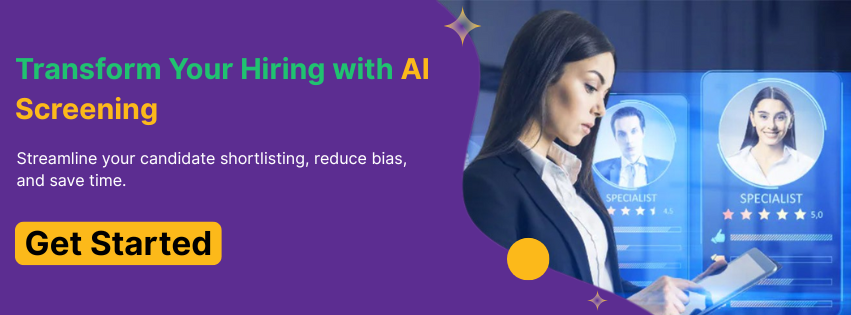
Addressing Concerns and Myths About AI in Screening
Okay, so it’s totally normal to have questions or feel a bit unsure about bringing AI into something as human-centric as hiring. Addressing these concerns openly is key to building trust and ensuring responsible implementation of AI candidate screening.
Is AI Replacing Recruiters?
This is perhaps the biggest worry people have, but it’s really just a myth. AI is a tool designed to augment human capabilities, not replace them entirely. AI is great at repetitive, data-intensive tasks like initial screening. But recruiters? They’re essential for tasks requiring emotional intelligence, complex decision-making, relationship building, negotiation, and assessing cultural fit – things AI just cannot replicate. AI actually lets recruiters spend more time on the human side of HR.
Ensuring Ethical AI and Preventing New Biases
AI systems learn from data, and if that data contains historical biases, the AI can pick them up, maybe even make them worse. This is a real challenge. Responsible AI development requires diverse, unbiased training data, rigorous testing, and keeping an eye on it always. Furthermore, human oversight is non-negotiable. Recruiters must understand how the AI works, review its outputs, and be able to step in if potential bias is suspected. Choosing AI candidate screening software that tries to deal with bias? That’s important.
Data Privacy and Compliance
Using AI with candidate data? Yeah, that brings up privacy questions. Reputable AI candidate screening software platforms are built keeping rules like GDPR and CCPA in mind. They implement secure data storage, encryption, and access controls. Companies using AI need clear rules about data processing policies and need to obtain necessary consents from candidates regarding how their data will be used by the AI. Being upfront with candidates about the process? Also super important.
The ‘Black Box’ Problem
Some people worry AI screening is a ‘black box’ where you don’t really know why a decision was made. But good AI candidate screening software should be transparent. It should show why a candidate was ranked highly. Like, “matched 8 out of 10 key skills,” or “5 years relevant industry experience identified.” This transparency allows recruiters to trust the AI, understand its logic, and validate the results, preventing AI from just being an unquestioned authority.
The Future of Candidate Screening: More AI, More Human Touch
The way AI is used in candidate screening is still changing, still getting better. We can likely expect to see even more ways it helps streamline the process. Maybe things like video analysis (used ethically, of course, to assess communication skills, not appearance) or sentiment analysis on candidate responses might become more common, albeit with careful consideration of privacy and bias. AI’s role might even grow to help automate initial interview stages or provide structured evaluation frameworks.
However, as AI takes on more of the administrative and analytical tasks, the human part of hiring? It becomes even more critical. Recruiters and hiring managers will have more time to focus on assessing soft skills, cultural alignment, team fit, and really building meaningful connections with candidates. The future of candidate screening isn’t just more AI; it’s AI enabling a more human, strategic, and effective hiring process overall.
Conclusion: Smart Shortlisting is Here – Embrace the AI Revolution
Okay, wrapping things up. Doing candidate screening by hand? It’s just a huge drain. On time, on money, and maybe fairness too. The challenges of dealing with tons of applications, potential biases, and all the administrative burden… they make the old methods pretty tough in today’s competitive talent market. The solution? Using AI.
AI candidate screening transforms this bottleneck into a streamlined, objective, and efficient process. By automating things like resume parsing, skills matching, and initial ranking, AI frees up recruiters to focus on more important, strategic tasks – the human interactions. The benefits? Huge time and cost savings, finding better candidate quality, enhanced objectivity, and faster hiring. Adopting AI candidate screening software isn’t just about being efficient; it’s about building a fairer, faster, and better hiring process overall that helps you find and secure the best talent… without all that manual effort.
Frequently Asked Questions (FAQs)
Q1: Is AI candidate screening only for large companies?
No, while AI is excellent for high volume, many AI candidate screening software solutions are scalable and affordable for small and medium-sized businesses too. The benefits of efficiency and objectivity apply regardless of company size, I think.
Q2: How accurate is AI screening compared to human screening?
AI can be more consistent and objective than humans for specific criteria based on structured data. Its accuracy depends heavily on the quality of the data it’s trained on and the algorithms used. It excels at identifying keyword matches, experience length, and specific skills reliably, often with higher accuracy than a fatigued human reviewer sifting through hundreds of resumes, perhaps.
Q3: Can AI eliminate bias entirely?
AI cannot eliminate bias entirely, as bias can be present in the training data or even unintentionally introduced in algorithm design. However, AI candidate screening software with built-in bias mitigation features and human oversight can significantly reduce human biases compared to traditional manual review, leading towards a fairer process.
Q4: How long does it take to implement AI candidate screening software?
Implementation time varies depending on the complexity of the software, the need for integration with existing systems (like ATS), and the vendor’s support. Simple cloud-based solutions might be operational in days or weeks, while complex enterprise integrations could take months. It really depends.
Q5: What kind of data does AI need to screen candidates?
Primarily, AI analyzes structured data extracted from resumes, cover letters, and job descriptions. Some systems might also analyze data from initial assessments or public profiles with explicit consent and ethical considerations. The AI uses this data to match candidate profiles against job requirements, that’s the main point.

